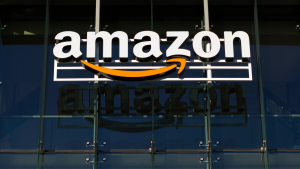On the morning of August 5, the unwinding of the Yen carry trade accelerated, leading to a spike in the expected volatility index. Investors were selling and asking questions later. Even the best e-commerce stocks suffered under this carnage. That pullback has created an opportunity to buy into one of the most enduring themes of our time.
The thesis for e-commerce stocks is straightforward. There has been a gradual shift from physical shopping to online shopping. After all, who doesn’t love shopping from the comfort of their homes and having items delivered on the same day!
These e-commerce stocks are winning against brick-and-mortar stores and their online peers. They have the scale to deliver value through lower prices and quicker delivery times. Still, with a significant portion of shopping happening in physical stores, there is a massive opportunity ahead. The recent pullback in these e-commerce stocks provides the perfect entry point to participate in this secular shift.
Amazon (AMZN)

Amazon (NASDAQ:AMZN) is one of the best e-commerce stocks you can buy. Over the past three weeks, it has pulled back from $200, dropping by over 15%. Now, it offers an attractive risk-reward opportunity going forward. The long-term drivers of its outperformance are still in place.
Over the years, Amazon has amassed over 200 million global Amazon Prime subscribers due to its obsessive customer focus. By offering a combination of low prices and quick delivery times, it has kept growing its loyal customer base. This has allowed the company to achieve a massive operating footprint. Keeping true to its ethos, the company has been giving back the cost savings from its economies of scale to customers via lower prices, quicker delivery times and value-added services like entertainment.
Today, Amazon dominates the e-commerce market in North America and Europe. For instance, in the U.S., it accounts for 40% of retail e-commerce sales. What’s more, the company sees more growth opportunities ahead. For example, bundling more services on Amazon Prime to attract and retain more customers and using AI to improve its recommendation engine.
With these tailwinds, Amazon should be higher. However, after the recent pullback, it’s trading at one of its lowest historical valuations. The stock is a bargain at a forward non-GAAP price-to-earnings of 35 compared to a 5-year historical average of 181.
MercadoLibre (MELI)

MercadoLibre (NASDAQ:MELI) is Latin America’s most dominant e-commerce retailer. The fact that it has managed to relegate Amazon to second place in key markets like Brazil and Mexico points to its strength. Furthermore, since online shopping penetration in its markets lags North America and Europe, the stock has a significant growth runway.
Indeed, the South American giant was one of the e-commerce stocks that delivered solid Q2 results. Net revenues increased 42% year-over-year to $5.1 billion in the quarter. This impressive performance was powered by strong growth in key markets. Net revenues in Brazil and Mexico grew 51% and 66%, respectively.
The online retailer showed impressive operating metrics highlighting its position as the preferred online marketplace in Latin and Central America. For the quarter, unique active buyers were 57 million compared to 48 million in Q2 2023 and items sold reached 416 million from 325 million. Due to growth in users and items sold, gross merchandise volume rose from $10.5 to $12.6 billion.
MELI stock is on solid footing and could soar once the market recovers from the recent meltdown. At a forward price-to-sales of 4.6 and a forward P/E of 58, it is undervalued relative to its impressive growth rate.
Coupang (CPNG)

Dubbed the Amazon of South Korea, Coupang (NYSE:CPNG) is one of the best e-commerce stocks. It’s the dominant player in the South Korean market, a geography with excellent e-commerce unit economics due to its high population density. Also, it is expanding into other Asian markets, such as Taiwan.
Recent earnings proved why this retailer is one of the top e-commerce stocks to buy. On a constant currency basis, revenues grew 30% YOY. Even after excluding Farfetch, it achieved a respectable 23% growth. What’s more, commerce active customers increased 12% YOY.
Regarding long-term growth, management sees a massive opportunity in the fragmented $560 billion e-commerce space. They expect tremendous growth in its third-party marketplace as more marketplace sellers join it. Moreover, the company continues to make more investments to enhance marketplace and Fulfillment and Logistics by Coupang (FLC) growth.
In terms of profitability, management expects to continue expanding margins by scaling margin-efficient offerings and supply chain optimization. In Q2, for instance, gross margins improved by 310 basis points YOY to 29.3%. Due to these margin improvements and growth, gross profits increased 41% YOY to $2.1 billion.
Considering the growth and profitability improvements, CPNG stock is a buy. The company continues its international expansion and is growing its third-party marketplace business.
On the date of publication, Charles Munyi did not hold (either directly or indirectly) any positions in the securities mentioned in this article. The opinions expressed in this article are those of the writer, subject to the InvestorPlace.com Publishing Guidelines.
On the date of publication, the responsible editor did not have (either directly or
indirectly) any positions in the securities mentioned in this article.
